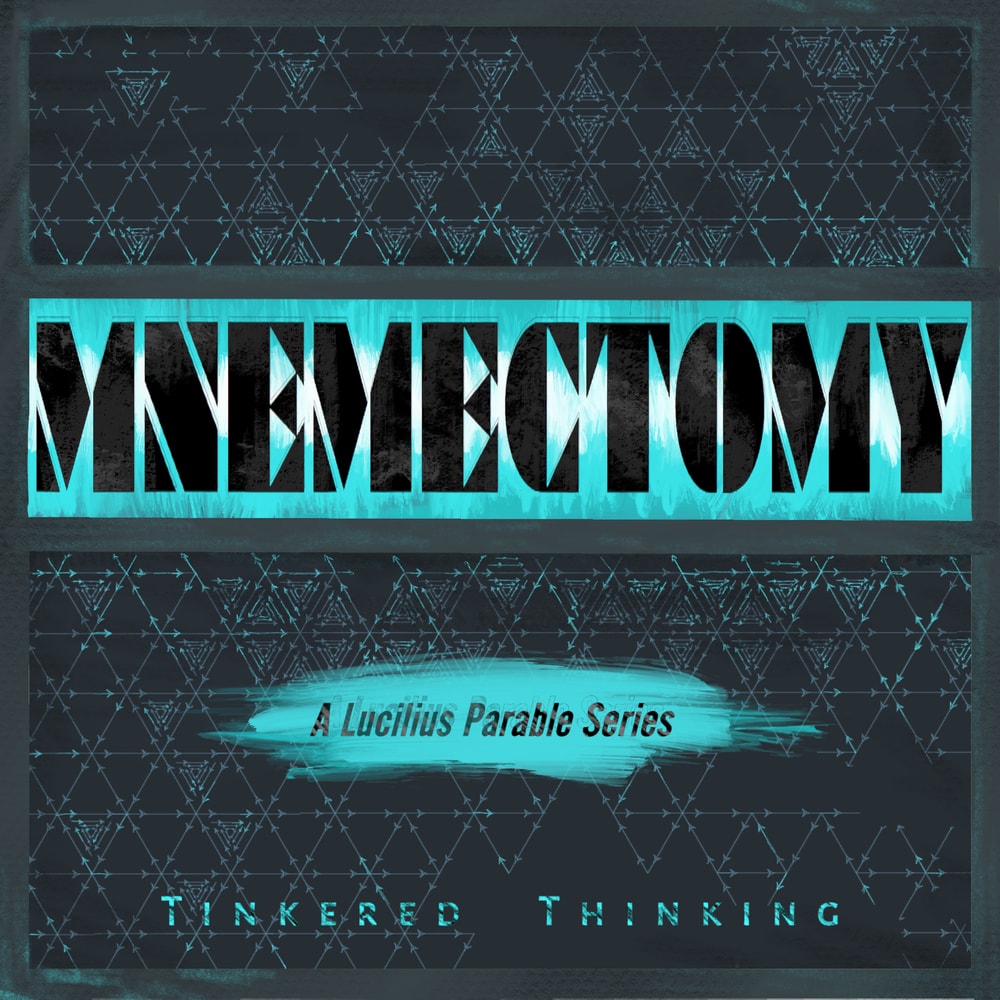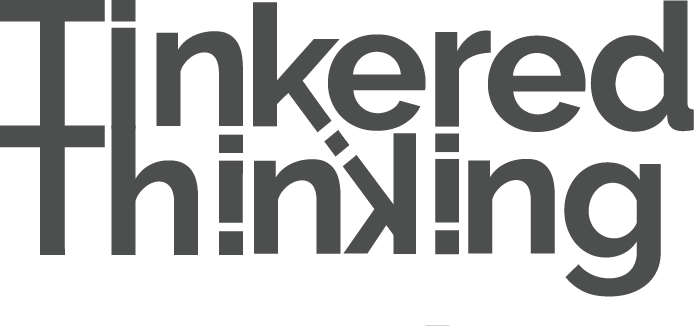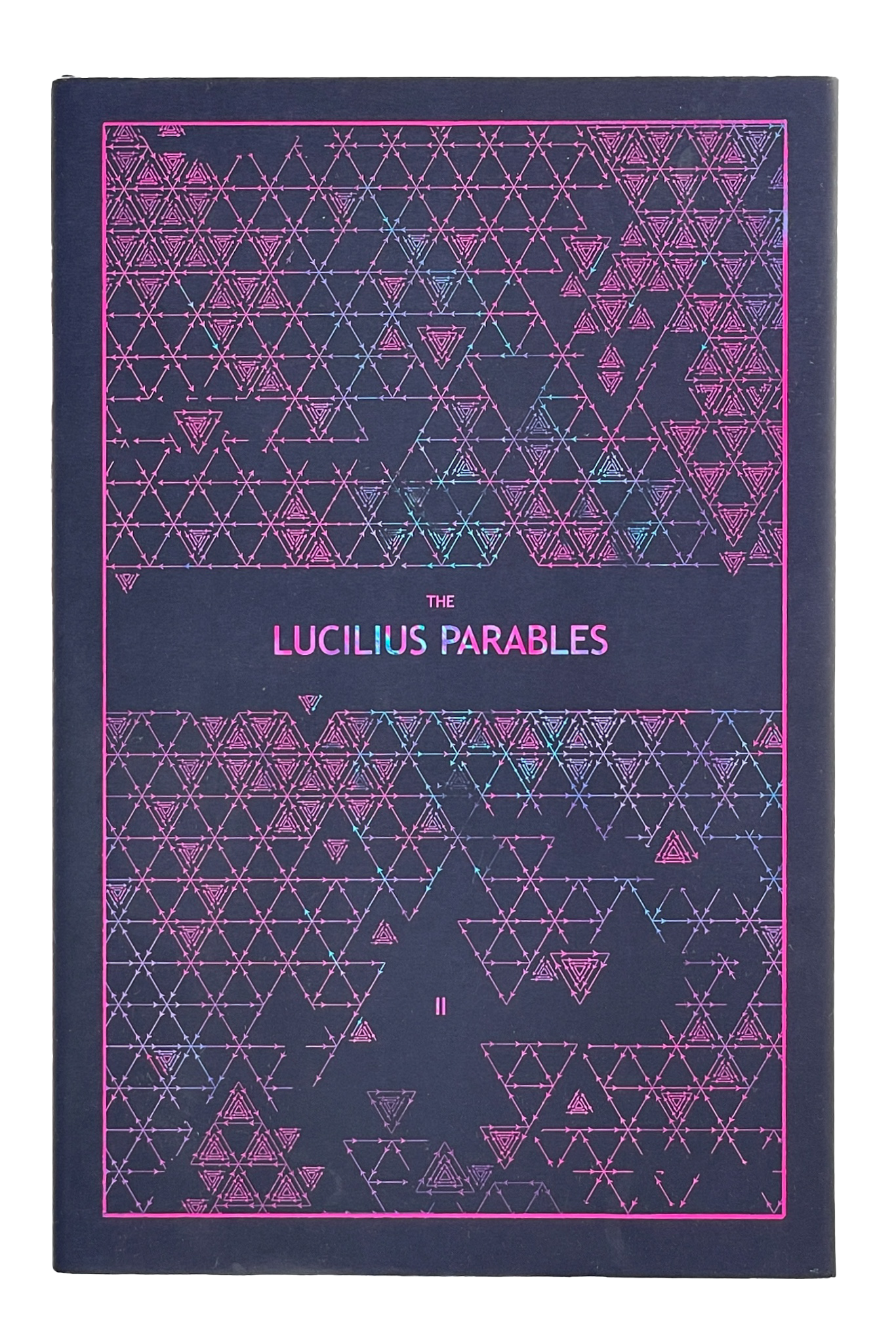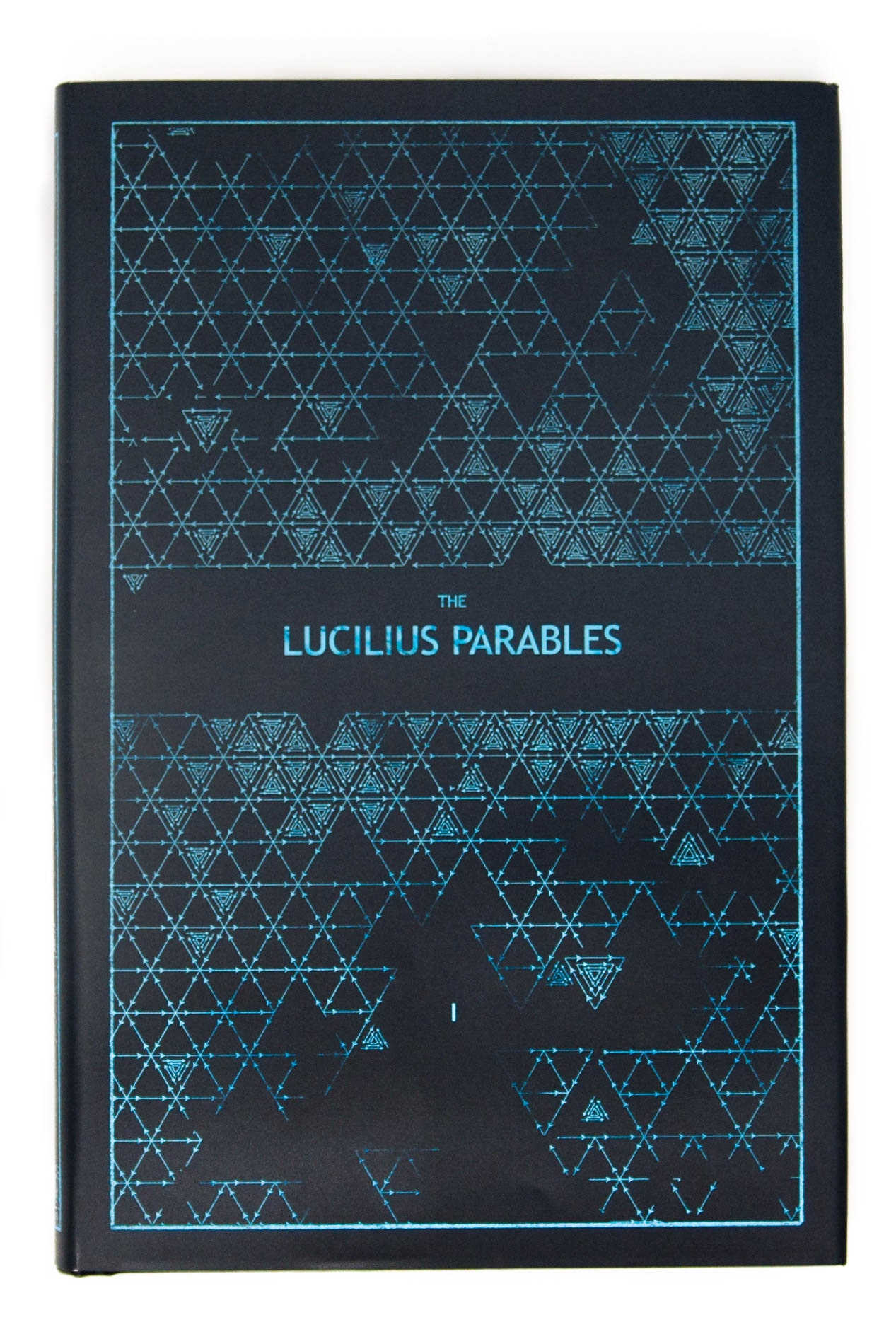Daily, snackable writings to spur changes in thinking.
Building a blueprint for a better brain by tinkering with the code.
subscribe
rss Feeds
SPIN CHESS
A Chess app from Tinkered Thinking featuring a variant of chess that bridges all skill levels!
REPAUSE
A meditation app is forthcoming. Stay Tuned.
INTO THE VOID
November 9th, 2018
Have an idea, start a project, write something down, it doesn’t matter what or how we produce our own personal form of generosity, there comes a time when you have to push that little bird out of the nest and let it fall into the void.
Think for a moment of the word coddle. It means to treat in an overly indulgent or overprotective way. But what good does this do? We might answer this question more circumspectly by asking: what is the cause of such an impulse. Clearly in manifests from a form of fear. A fear of what the world will do to the thing that needs to be coddled. Perhaps with infants and small children, this impulse is justified. Injury is a real risk, no matter how it manifests.
But what about the idea or the project that we are afraid to share or launch?
The same fear certainly applies. We fear that the world will hate it, or worse, be totally indifferent. And so coddle takes on a larger expression of itself. We coddle an idea or project out of a fear that this will happen, because we think that such a reaction from the world is a reflection on our own self.
Indeed the logic seems sound here: we had an idea that we thought the world might like, but we turn out wrong, and this wrongness somehow translates to our person, and we become slathered in this wrongness.
This is again, a case of mistaken identity. We have the bad habit of mistaking the only object of consciousness as our own identity. Intense emotions are perhaps the easiest way to understand this concept. When enraged, we somehow become anger incarnate. We lose ourselves in the process and drama of anger. So to can be the case with disappointment. We can lose ourselves in overwhelming concentration on the fact that an idea has failed. The failure becomes a form of identity, that if too well entertained, may find some permanent hold in our mental house.
All such mistaken identity is an error of perspective.
By zooming out we can view the whole incident as an experiment with reality. Even no feedback is potentially useful feedback if we only integrate it appropriately.
But the dazzling thing about the void is that it will play a sort of tennis with us. Perhaps we will lob idea after idea into the void with nothing happening. The void might seem like an insatiable eating machine that gives nothing back. But if we keep at it, something will eventually strike, and hit back, and we will discover real feedback.
We would do best to launch everything and anything we can generate off into the void. Simply put, it’s deceptive that we can see and hear the world because having such gives the illusion that it can be understood (and perhaps it can) and that tomorrow will look much like today. But situations can change drastically for totally unseen reasons. It’s this possibility that does us well to launch any and every idea off into the void. There’s no telling which one might get volleyed back with a payload of gold.
This episode references Episode 93: The Generator.
BAD DAY
November 8th, 2018
Any number or variety of things can combine and mingle into a single day and deride us from healthy, positive, productive thinking, behaviors and habits. Note for a moment how much easier it is to lose a good habit than it is to create one in the first place.
A commitment to work out everyday only needs one break in the streak to start a trend that can add up.
Such good habits are fragile, even after long implementation, and a tiny coalescence of negative incidents can have a huge impact.
A project flops.
An angry bitter message comes our way.
A misunderstanding balloons far beyond it’s meaning.
In the same way that good habits can be compounded for an effect that is greater than the sum of their parts, so too with the negative that life can throw our way. Three unfortunate events on the same day seem to have a compounding effect. Whereas one negative incident might be cooly swallowed by our wake, two is like hitting an iceberg and three is like sailing off the edge of the planet.
Sometimes we still have to go to work, and we simply go through the motions. But do we forget our good habits? The daily commitment to write or work out or meditate?
Best to do the same and just go through the motions. Even if the writing is terrible and the workout is sloppy and the meditation feels like a waste of time, tomorrow is a new day, with a much higher probability for a better outlook. And if we’ve simply gone through the motions, it’ll be a gift to tomorrow’s outlook, and we’ll be that much more likely to keep on track, no matter how far we seemed to drift.
MARK OF A MISTAKE
November 7th, 2018
Hindsight is 20/20. Or so they say. The catch of the phrase depends on the realization that a mistake was being made. But if we have continued, or continue to make a mistake that exists through time, or if we continually repeat a mistake, then hindsight is not necessarily in the sort of focus that we like to call 20/20.
Such a sharp perspective of the past requires a realization that such a mistake was being made and the cessation of the behavior that is the mistake or leads to the mistake.
A mistake only looks like a mistake when a person is unwilling to incorporate new information that seems to imply that a belief or behavior might be a mistake. We might be somehow blind to the implications of such new information in the same way that facts and arguments that are counter to our beliefs in some way tend to only entrench our beliefs, however obviously flawed and mistaken we might be in doing so. We should ask what exactly in the human psyche keeps us on such an illogical path no matter how clear the evidence is against our beliefs? Clearly this is not logical, which leaves the other obvious option of emotion. When someone has dug in on their false opinion or belief in blatant disregard of contradicting logical evidence, what might we identify as the primary emotion that such a person feels?
We make the mistake of identifying with our belief or thought so much so that to admit a mistake is to effectively identify as a mistake: an experience that can theoretically open a can of all sorts of negative emotions. Think of the spectrum that can exist here. For example, we might not be so affected by the realization that we were mistaken about the time of the party last night, but the destabilizing emotions that could come from information counter to core beliefs has frightening potential. The concept of mental breakdown starts to stir in such a situation. And what exactly is a mental break down other than accepting and believing information that is counter to core beliefs? Such core beliefs literally breakdown if such information is integrated, like seismic waves passing fragile buildings.
A mistake doesn’t look like a mistake if a person adjusts quickly and willingly to new information. Like hockey players changing direction based on changes in the direction of the puck.
Ultimately, it’s a sense of certainty that is at the core of our mistakes, keeping us on ill tracks of behavior and denying the influence of new, contradictory information.
This curse of certainty rides on a double-edged precept: the only way to prove yourself wrong is also the only way to find out if you’re right.
MISTAKES: QUANTITY VS. DURATION
November 6th, 2018
We all make mistakes, and often it’s said that it’s only through our mistakes that we learn. However, mistakes have all sorts of qualities that may allow us to differentiate between types of mistakes. And if learning is a function of mistakes, then perhaps these differences in the quality of mistakes that we make can have an impact on the quality and speed of our learning.
Take for example the quality of duration. We can behave for any length of time in a way that we may look back on and see as a mistake. It seems obvious that any mistake would be ideally made quickly so that we do not live with some kind of aggregating consequence of mistake. While general, it seems fair to assume that the longer the duration of a mistake, the larger the consequences of that mistake. The logic here is that the sooner a mistake is rooted out of behavior or strategy, the more time can be spent on a better strategy or behavior that may result in the achievement of specific goals. This is essentially a pivot from one direction of behavior to another.
The image arises of going down the wrong road for a long long time. The more time spent going in the wrong direction, the more time required to get to the final destination.
We might ask then, if we seek to have the shortest possible duration of mistake, how does this change our relationship to mistakes?
If, for a moment, we take the common expression of ‘learning through mistakes’ as a golden rule, we can come to the inference that since learning requires mistakes, and we decrease the duration of our mistakes as much as possible, this gives rise to a greater quantity of mistakes. Essentially, by spending less time entertaining the direction of a mistake, we are afforded more time and opportunity to make other beneficial mistakes.
Chasing a moving target creates a useful image in this instance. If we glimpse the target and then keep our head down and run in only that direction, it’s clear than we will not hit the target since it is moving. This is clearly an unwise strategy. But, if we don’t realize that we are trying to hit a moving target, suddenly it is not so clear whether or not this strategy is bad. If however, we watch someone chase a moving target, like hockey players skating after the puck, we see a constant alteration of direction. Players are almost incessantly moving in new directions as they see the puck change direction. In the parlance of this analogy, we could say that every direction before the most recent pivot was a kind of mistake. It may have been virtually impossible to realize it at the time, but ultimately following such a direction would make a player look like a broken algorithm in a hockey video game: clearly a mistake. The reason why the concept of mistake does not resonate clearly with these previous directions is because the pivot of each player is performed so quickly based on changes in the environment. The action seems well centered in the present.
Unfortunately, goals in life are not as easy to see as a small black piece of hard rubber sliding across white ice.
More importantly, we may not realize that goals which may seem like static milestones, may in fact be more like moving targets. While geography changes slowly enough that it’s effectively static, and therefore it’s fairly straightforward to get from point A to point B, like going from Chicago to Paris, in comparison, milestones or goals that may exist at some point in the future are certainly more like moving targets; primarily for the same reason that the puck is moving around the ice rink: the people around us are moving and changing, and most of our goals as humans have to do with our relationship to those moving changing people. Money, for example, defines a type of relationship between people. We pay money for services, and presumably, those who give the culture tremendous gifts, like the Iphone, or the automobile, or a social media platform are likewise rewarded with money. It’s been pointed out that a technology or product can come about at the wrong time. An invention can come about before there is a real need for it, or long after it may have been useful.
Google Glass, for example was a much-hyped initial foray into augmented reality, and while virtual and augmented reality is still projected to be an increasingly large part of the future, Google Glass was a flop, simply because it may have been too early. In this case, the target of an augmented reality market was not in the present where Google thought it might be at the time. It akin to trying to shoot a hockey puck without realizing that it has drifted forward of the range of your swing.
Regardless of the goal or milestone, if it can exist at all, it’ll be found somewhere in the future, but which point of the future, and what we have to do to prepare and anticipate the situation where we might be able to succeed is extremely difficult to forecast. We are best served by paying close attention to the present, and exercising the ability to pivot as quickly as possible as we follow the scent of our goals. Pivoting quickly in this case means making mistakes, lots of mistakes. The only way we can afford so many mistakes is by ensuring we don’t spend too much time on any one mistaken direction.
This episode references Episode 72: Persevere vs. pivot.
THE TINKER TWEAKING THIEF
November 5th, 2018
While the concept of Exorcism is primarily a religious concept, it is sometimes appropriated and used in secular contexts with regards to ideas or behaviors.
The concept of exorcism starts with a supposition that some kind of undesirable entity exists inside an otherwise respectable person that is theoretically deserving of care.
Rooting out this undesirable entity is the whole shebang, but what if the undesirable entity is not a quote ‘thing’ that is tangible enough to be moved around and potentially out of a person?
When, for example, we find ourselves arguing with someone who seems particularly stubborn on some point, we may develop a perspective that fits well with the concept of exorcism. We determine that some stop-gate exists within this stubborn person that we must find and break in order to help this person realize the mistake of their opinion or perspective.
The default and predominate method here is a kind of brute force argument: we will try to show blatantly and bluntly exactly how someone’s perspective is ‘wrong’. We list the reasons in often stark contrast and difference to the perspective of the opposition. But anyone who has tried to crack a safe through a brute force method – and the number of such people is or should be essentially zero – it can take an ungodly amount of time to finally stumble across the correct combination.
What would a successful thief actually do with such a safe? Brute force not only takes a long time, but it’s boring and inefficient compared to the possible alternative strategies that exist.
The successful thief listens very carefully, perhaps putting an ear against the door of the safe, or the thief finds some other way to get some feedback from the safe as she interacts with it. Perhaps she feels very closely for variations in the force required to turn the number knob. Regardless, the effort here is to first learn something very deep and intimate about the internal workings of the safe.
An unwise thief could blithely try a few combinations, get angry and simply try to rip the door open by hand, but this seems particularly unwise considering it’s exactly what the construction of a safe is designed to withstand.
No, the wise thief seeks to understand how the safe works from the inside out. And this first starts with gathering information, either though a keen ear or touch. The wise thief knows that if she simply understands how it is functioning on the inside, then using the limited influence she has on those internal workings, she can manipulate the system to naturally change in accord to her desires without any tactics that are quintessentially damaging to the system. A safe after all is also primarily designed to open, albeit only with the right conditions.
What would we change about our own behavior and our own tactics regarding other stubborn people if we keep in mind the thief who diligently takes the time to learn about the safe she seeks to open?
We’d do well to first listen instead of speak. By doing so we can learn a little bit more about how a person works and how such a person thinks. With an expansive and open mind, we begin to model their internal world within ourselves. It’s like painting a picture of a landscape based on what someone says. If we spend the whole time talking ourselves, our painting will turn out wildly inaccurate because we have inhibited the flow of information we need to make a good painting. But if we listen carefully and ask questions that seek to improve our understanding of the environment we hope to change for the better, like asking.. how exactly far is the tree from the river in this landscape? Or what was the first occurrence in your life that relates to this view point that you have? We empower ourselves with knowledge in the same way that the tinker tweaking thief does.
By having an accurate understanding of the landscape we seek to influence, we can then move about that landscape with greater ease, instead of bumbling around with a blindfold and bumping into this tree or falling into that river and experiencing only unpleasant aggravation.
We’d do well to be like the tinker tweaking thief, developing confidence through practice, and making ourselves open to important information before trying to have an effect and ultimately leaving exorcism to the realm from whence it came, because the good thief knows there is nothing wrong that must be purged, only a lack of understanding that must be filled and effectively used.
-compressed.jpg)





